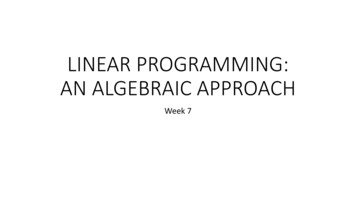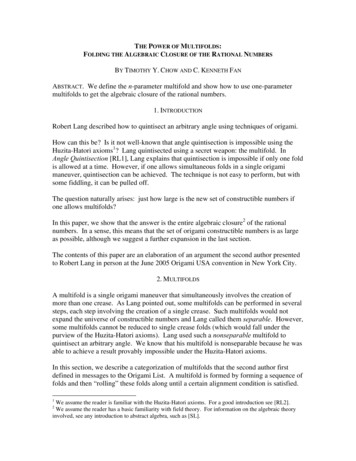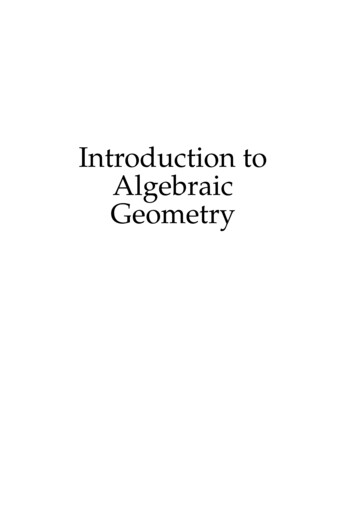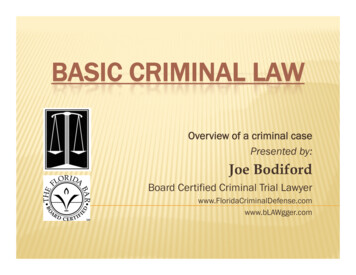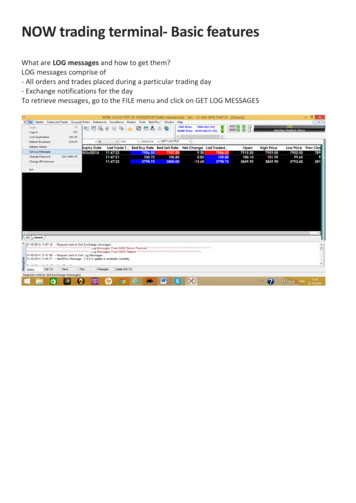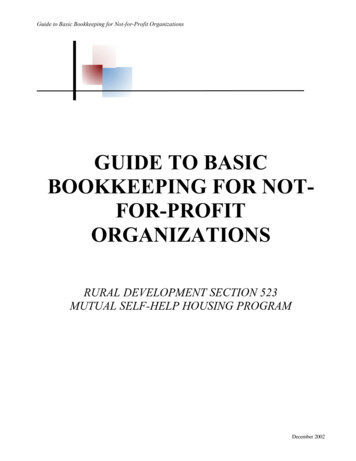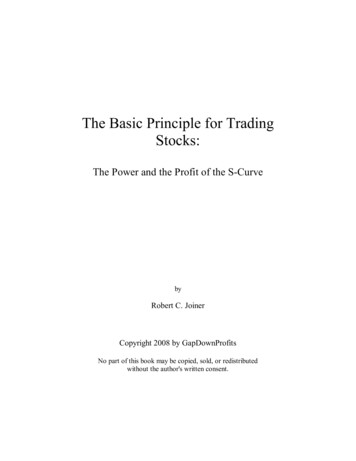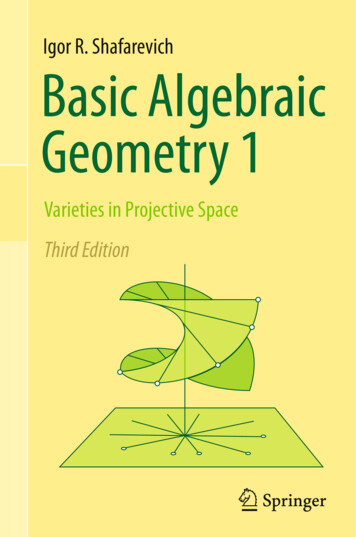
Transcription
Igor R. ShafarevichBasic AlgebraicGeometry 1Varieties in Projective SpaceThird Edition
Basic Algebraic Geometry 1
Igor R. ShafarevichBasic AlgebraicGeometry 1Varieties in Projective SpaceThird Edition
Igor R. ShafarevichAlgebra SectionSteklov Mathematical Instituteof the Russian Academy of SciencesMoscow, RussiaTranslatorMiles ReidMathematics InstituteUniversity of WarwickCoventry, UKISBN 978-3-642-37955-0ISBN 978-3-642-37956-7 (eBook)DOI 10.1007/978-3-642-37956-7Springer Heidelberg New York Dordrecht LondonLibrary of Congress Control Number: 2013945284Mathematics Subject Classification (2010): 14-01Translation of the 3rd Russian edition entitled “Osnovy algebraicheskoj geometrii”. MCCME,Moscow 2007, originally published in Russian in one volume Springer-Verlag Berlin Heidelberg 1977, 1994, 2013This work is subject to copyright. All rights are reserved by the Publisher, whether the whole or part ofthe material is concerned, specifically the rights of translation, reprinting, reuse of illustrations, recitation,broadcasting, reproduction on microfilms or in any other physical way, and transmission or informationstorage and retrieval, electronic adaptation, computer software, or by similar or dissimilar methodologynow known or hereafter developed. Exempted from this legal reservation are brief excerpts in connectionwith reviews or scholarly analysis or material supplied specifically for the purpose of being enteredand executed on a computer system, for exclusive use by the purchaser of the work. Duplication ofthis publication or parts thereof is permitted only under the provisions of the Copyright Law of thePublisher’s location, in its current version, and permission for use must always be obtained from Springer.Permissions for use may be obtained through RightsLink at the Copyright Clearance Center. Violationsare liable to prosecution under the respective Copyright Law.The use of general descriptive names, registered names, trademarks, service marks, etc. in this publicationdoes not imply, even in the absence of a specific statement, that such names are exempt from the relevantprotective laws and regulations and therefore free for general use.While the advice and information in this book are believed to be true and accurate at the date of publication, neither the authors nor the editors nor the publisher can accept any legal responsibility for anyerrors or omissions that may be made. The publisher makes no warranty, express or implied, with respectto the material contained herein.Printed on acid-free paperSpringer is part of Springer Science Business Media (www.springer.com)
PrefaceThe third edition differs from the previous two in some fairly minor correctionsand a number of additions. Both of these are based on remarks and advice fromreaders of the earlier editions. The late B.G. Moishezon worked as editor on thefirst edition, and the text reflects his advice and a number of his suggestions. I wasequally fortunate with the editor of the second edition, V.L. Popov, to whom I amgrateful for a careful and thoughtful reading of the text. In addition to this, both thefirst and the second edition were translated into English, and the publisher SpringerVerlag provided me with a number of remarks from Western mathematicians onthe translation of the first edition. In particular the translator of the second edition,M. Reid, contributed some improvements with his careful reading of the text. Othermathematicians who helped me in writing the book are mentioned in the preface tothe first two editions. I could add a few more names, especially V.G. Drinfeld andA.N. Parshin.The most substantial addition in the third edition is the proof of the Riemann–Roch theorem for curves, which was merely stated in previous editions. This isa fundamental result of the theory of algebraic curves, having many applications;however, none of the known proofs are entirely straightforward. Following Parshin’ssuggestion, I have based myself on the proof contained in Tate’s work; as Tate wrotein the preface, this proof is a result of his and Mumford’s efforts to adapt the generaltheory of Grothendieck residues to the one dimensional case. An attractive featureof this approach is that all the required properties of residues of differential followfrom unified considerations.This book is a general introduction to algebraic geometry. Its aim is a treatmentof the subject as a whole, including the widest possible spectrum of topics. To judgeby comments from readers, this is how the previous editions were received. Thereader wishing to get into more specialised areas may benefit from the books andarticles listed in the bibliography at the end. A number of publications reflecting themost recent achievements in the subject are mentioned in this edition.V
VIPrefaceFrom the Preface to the Second Edition (1988)The first edition of this book came out just as the apparatus of algebraic geometrywas reaching a stage that permitted a lucid and concise account of the foundationsof the subject. The author was no longer forced into the painful choice betweensacrificing rigour of exposition or overloading the clear geometrical picture withcumbersome algebraic apparatus.The 15 years that have elapsed since the first edition have seen the appearanceof many beautiful books treating various branches of algebraic geometry. However,as far as I know, no other author has been attracted to the aim which this book setitself: to give an overall view of the many varied aspects of algebraic geometry,without going too far afield into the different theories. There is thus scope for asecond edition. In preparing this, I have included some additional material, rathervaried in nature, and have made some small cuts, but the general character of thebook remains unchanged.The three parts of the book now appear as two separate volumes. Book 1 corresponds to Part I, Chapters 1–4, of the first edition. Here quite a lot of materialof a rather concrete geometric nature has been added: the first section, forming abridge between coordinate geometry and the theory of algebraic curves in the plane,has been substantially expanded. More space has been given over to concrete algebraic varieties: Grassmannian varieties, plane cubic curves and the cubic surface.The main role that singularities played in the first edition was in giving rigorousdefinition to situations we wished to avoid. The present edition treats a number ofquestions related to degenerate fibres in families: degenerations of quadrics and ofelliptic curves, the Bertini theorems. We discuss the notion of infinitely near pointsof algebraic curves on surfaces and normal surface singularities. Finally, some applications to number theory have been added: the zeta function of algebraic varietiesover a finite field and the analogue of the Riemann hypothesis for elliptic curves.Books 2 and 3 corresponds to Parts II and III, Chapters 5–9 of the first edition.They treat the foundations of the theory of schemes, abstract algebraic varieties andalgebraic manifolds over the complex number field. As in the Book 1 there are anumber of additions to the text. Of these, the following are the two most important.The first is a discussion of the notion of moduli spaces, that is, algebraic varietiesthat classify algebraic or geometric objects of some type; as an example we workout the theory of the Hilbert polynomial and the Hilbert scheme. I am very gratefulto V.I. Danilov for a series of recommendations on this subject. In particular theproof of Theorem 6.7 of Section 4.3, Chapter 6, is due to him. The second additionis the definition and basic properties of a Kähler metric and a description (withoutproof) of Hodge’s theorem.For the most part, this material is taken from my old lectures and seminars, fromnotes provided by members of the audience. A number of improvements of proofshave been borrowed from the books of Mumford and Fulton. A whole series ofmisprints and inaccuracies in the first edition were pointed out by readers, and byreaders of the English translation. Especially valuable was the advice of AndreiTyurin and Viktor Kulikov; in particular, the proof of Theorem 4.13 was providedby Kulikov. I offer sincere thanks to all these.
PrefaceVIIMany substantial improvements are due to V.L. Popov, who edited the secondedition, and I am very grateful to him for all the work and thought he has put intothe book. I have the pleasure, not for the first time, of expressing my deep gratitudeto the translator of this book, Miles Reid. His thoughtful work has made it possibleto patch up many uneven places and inaccuracies, and to correct a few mathematicalerrors.From the Preface to the First Edition (1972)Algebraic geometry played a central role in 19th century math. The deepest resultsof Abel, Riemann, Weierstrass, and many of the most important works of Klein andPoincaré were part of this subject.The turn of the 20th century saw a sharp change in attitude to algebraic geometry.In the 1910s Klein1 writes as follows: “In my student days, under the influence of theJacobi tradition, Abelian functions were considered as the unarguable pinnacle ofmath. Every one of us felt the natural ambition to make some independent progressin this field. And now? The younger generation scarcely knows what Abelian functions are.” (From the modern viewpoint, the theory of Abelian functions is an analytic aspect of the theory of Abelian varieties, that is, projective algebraic groupvarieties; compare the historical sketch.)Algebraic geometry had become set in a way of thinking too far removed fromthe set-theoretic and axiomatic spirit that determined the development of math atthe time. It was to take several decades, during which the theories of topological,differentiable and complex manifolds, of general fields, and of ideals in sufficientlygeneral rings were developed, before it became possible to construct algebraic geometry on the basis of the principles of set-theoretic math.Towards the middle of the 20th century algebraic geometry had to a large extentbeen through such a reconstruction. Because of this, it could again claim the placeit had once occupied in math. The domain of application of its ideas had growntremendously, both in the direction of algebraic varieties over arbitrary fields andof more general complex manifolds. Many of the best achievements of algebraicgeometry could be cleared of the accusation of incomprehensibility or lack of rigour.The foundation for this reconstruction was algebra. In its first versions, the use ofprecise algebraic apparatus often led to a loss of the brilliant geometric style characteristic of the preceding period. However, the 1950s and 60s have brought substantial simplifications to the foundation of algebraic geometry, which have allowedus to come significantly closer to the ideal combination of logical transparency andgeometric intuition.The purpose of this book is to treat the foundations of algebraic geometry acrossa fairly wide front, giving an overall account of the subject, and preparing the ground1 Klein, F.: Vorlesungen über die Entwicklung der Mathematik im 19. Jahrhundert, GrundlehrenMath. Wiss. 24, Springer-Verlag, Berlin 1926. Jrb. 52, 22, p. 312.
VIIIPrefacefor a study of the more specialised literature. No prior knowledge of algebraic geometry is assumed on the part of the reader, neither general theorems, nor concreteexamples. Therefore along with development of the general theory, a lot of space isdevoted to applications and particular cases, intended to motivate new ideas or newways of formulating questions.It seems to me that, in the spirit of the biogenetic law, the student who repeatsin miniature the evolution of algebraic geometry will grasp the logic of the subject more clearly. Thus, for example, the first section is concerned with very simpleproperties of algebraic plane curves. Similarly, Part I of the book considers only algebraic varieties in an ambient projective space, and the reader only meets schemesand the general notion of a variety in Part II.Part III treats algebraic varieties over the complex number field, and their relationto complex analytic manifolds. This section assumes some acquaintance with basictopology and the theory of analytic functions.I am extremely grateful to everyone whose advice helped me with this book. Itis based on lecture notes from several courses I gave in Moscow University. Manyparticipants in the lectures or readers of the notes have provided me with usefulremarks. I am especially indebted to the editor B.G. Moishezon for a large numberof discussions which were very useful to me. A series of proofs contained in thebook are based on his advice.PrerequisitesThe nature of the book requires the algebraic apparatus to be kept to a minimum.In addition to an undergraduate algebra course, we assume known basic materialfrom field theory: finite and transcendental extensions (but not Galois theory), andfrom ring theory: ideals and quotient rings. In a number of isolated instances werefer to the literature on algebra; these references are chosen so that the reader canunderstand the relevant point, independently of the preceding parts of the book beingreferred to. Somewhat more specialised algebraic questions are collected togetherin the Algebraic Appendix at the end of Book 1.Recommendations for Further ReadingFor the reader wishing to go further in the study of algebraic geometry, we canrecommend the following references.For the cohomology of algebraic coherent sheaves and their applications: seeHartshorne [37].An elementary proof of the Riemann–Roch theorem for curves is given in W. Fulton, Algebraic curves. An introduction to algebraic geometry, W.A. Benjamin, Inc.,New York–Amsterdam, 1969. This book is available as a free download fromhttp://www.math.lsa.umich.edu/ wfulton/CurveBook.pdf.
PrefaceIXFor the general case of Riemann–Roch, see A. Borel and J.-P. Serre, L
Algebraic geometry had become set in a way of thinking too far removed from the set-theoretic and axiomatic spirit that determined the development of math at the time.
